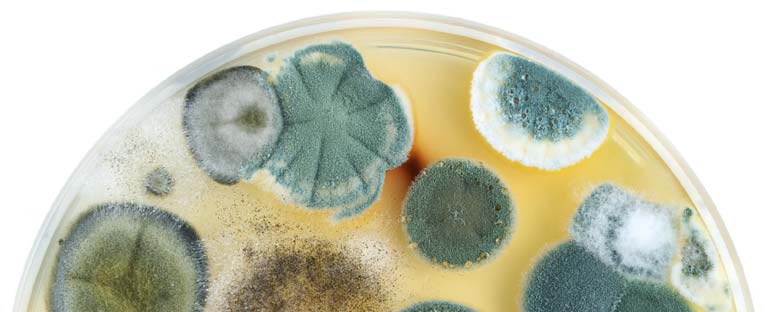
We have all heard about mold, have seen mold, and have more than likely have found some kind of mold inside of our homes. But what actually is this substance we know as mold? For starters, mold is a type of fungus. Also commonly known as “mould,” this term is ascribed to fungi that have begun to grow in the form of multicellular, almost fibrous structures referred to as “hyphae.”
Mold always consists of multiple cells. When a mold consists of a single cell, it is known as the organism “yeast.” Some molds and yeasts cause food spoilage, and have become a natural component in the breaking down of our foods.
Some yeasts, as you may know, actually play a role in enhancing our foods. Yeasts are commonly used in baking as a leavening ingredient, causing our breads to rise and retain that fluffy, aromatic feel.
Other types of mold also play an important role in biodegradation, or, conversely, in the production of foods, beverages, antibiotics, and enzymes that benefit our health and our lifestyles.
Mold can be found in a variety of physical states. Most notably, it can have a range of natural colors associated with it. Mold is most commonly found as a gray, compound-like substance, airy to the touch and malleable. Molds are known to come in other colors too, however. These include colors such as white, black, orange, green, and purple, among others.
Black Mold
We’ve all heard the dangers of “Black Mold,” and that if we find it in our homes, we should eradicate it immediately. But what are the actual dangers of mold? In reality, mold is found almost everywhere, both indoors and outdoors. When found outdoors, mold plays a very vital purpose in the natural decomposition of environmental components. In nature, molds aid in the breaking down of other natural organisms, plants and animals alike.
They help break down leaves that have fallen to the ground in Fall. They aid in decomposing other plants and trees that have already begun the natural decaying process. They even help animals to decay and return to the soil.
In fact, we inhale molds every time we leave our homes, and most of these outdoor molds play little to no role in affecting our health or causing mold-related symptoms. Indoors, however, mold tells a different story.
Molds thrive on moisture, and when introduced to a moisture-rich atmosphere, they can begin to multiply. Molds are an extremely prolific organism, and they reproduce by means of tiny, lightweight spores that are drifted through the air. When living inside your home, these spores are often inhaled because the air currents inside a home do not provide enough leverage nor space for the spores to move around freely. This means that, when inside, mold will actually release more of these reproductive spores than when compared to living outdoors. Mold commonly forms indoors from such every day activities as cleaning, cooking, and using air humidifiers, or forms from unavoidable household norms, such as the formation of condensation of windows and surfaces, leaking plumbing, or open doors and windows allowing moisture to enter the home.

